How to umpire basketball
How To Referee Basketball
Home>Sports>Basketball>Basketball How Tos
PreviousNext
Being a basketball referee can be a fun activity in which someone can also make some extra money. There are many important things to consider when you referee a basketball game. To begin with, it is necessary to know all the rules of the game of basketball, and particular rules of games or leagues that one might be refereeing. Second, it is necessary to know when to apply the rules and how to enforce them, treating players, coaches, fans, and other officials with respect and fairness. Also, it is necessary to have the right equipment referees need to use. Let’s start by taking a look at the basics, what referees:
Table of Contents
- What are referees?
- What do referees do?
- How do officials call a foul or violation?
- How to Become a Referee
- Referee Equipment List
What are referees?
Referees are a type of official.![]() They control all aspects of the basketball game. There are six different types of officials.
They control all aspects of the basketball game. There are six different types of officials.
- The Crew Chief (x1)
- The Referees (x2)
- The Official Scorer (x1)
- The Trained Timers (x2)
Depending on the game, the number of officials involved in a basketball game can change, but regardless of how many people are working, they must act together to guarantee that the game goes along smoothly and fair.
What do referees do?
Basketball referees must know all the game’s rules and regulations because they are the ones responsible for enforcing them, keeping the final result fair. Referees must call fouls, check for violations, award scores, and keep the game under control. The team of officials must decide what each member will be responsible for doing during a game, or which area of the court they will center their attention on. Sometimes referees will need the assistance of other officials to decide on a call, and thus they may have to gather and talk about the play.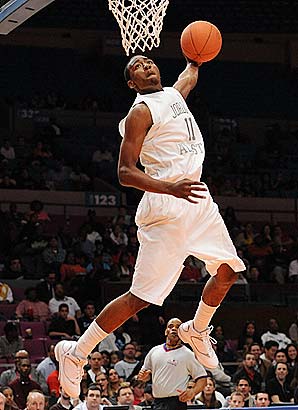 All that is so that the fairest outcome is achieved, and to make sure the game is being played within the rules.
All that is so that the fairest outcome is achieved, and to make sure the game is being played within the rules.
Some of the violations called by referees include:
- Traveling / Walking
- Double Dribble
- Goaltending
- Carrying
- 3-second violation
- 5-second violation
- 10-second violation
- Technical Fouls
- Personal Fouls
How do officials call a foul or violation?
When an official spots a violation, his or her will blow a whistle to indicate that the action must be stopped. Naturally, everyone’s attention will turn to referee who blew the whistle, in this where another part of being a referee comes in; referees must signal what violation was committed and by who. To do that, referees do signals with their hands and arms, therefore, all referees must know the signs, their meaning, and when to do them.
Being a referee is not easy. It is impossible to please everyone or get every call right, so referees will often face confrontation from fans, players, coaches, and even parents.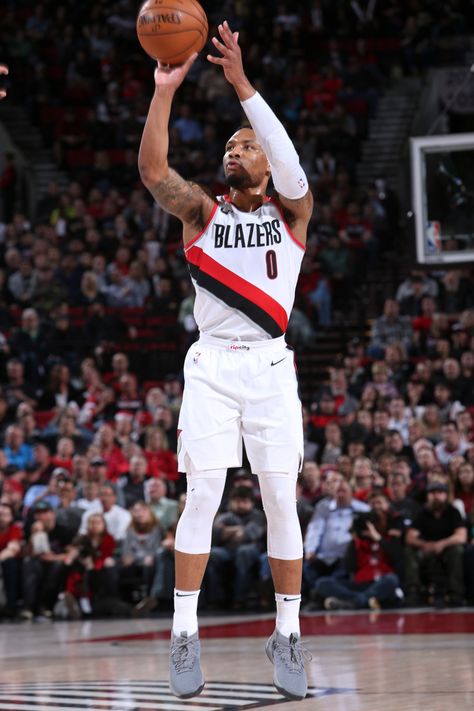 It is important for referees to not let missed calls or complaints influence on other calls throughout the game. If that happens, people start to question decisions more often, the referee loses credibility, and the game becomes chaos, because players and coaches of both sides will be talking too much to referee. To not let that happen, referees must make every call with confidence, and with a body language that shows that. Even if referees are not sure if a call they made was actually the right one, they gotta act as if they were 100% certain, not giving players and coaches room to complain more than necessary. However, that must be done while keeping composure and respecting everyone involved with the game. If the situation gets out of hand, referees can rely on technical fouls to control the nerves on the court.
It is important for referees to not let missed calls or complaints influence on other calls throughout the game. If that happens, people start to question decisions more often, the referee loses credibility, and the game becomes chaos, because players and coaches of both sides will be talking too much to referee. To not let that happen, referees must make every call with confidence, and with a body language that shows that. Even if referees are not sure if a call they made was actually the right one, they gotta act as if they were 100% certain, not giving players and coaches room to complain more than necessary. However, that must be done while keeping composure and respecting everyone involved with the game. If the situation gets out of hand, referees can rely on technical fouls to control the nerves on the court.
How to Become a Referee
Referees are required in basketball games of all levels, without them there is no organized basketball. Regardless of the level of basketball you want to referee (youth, college, NBA), you have to start from the bottom.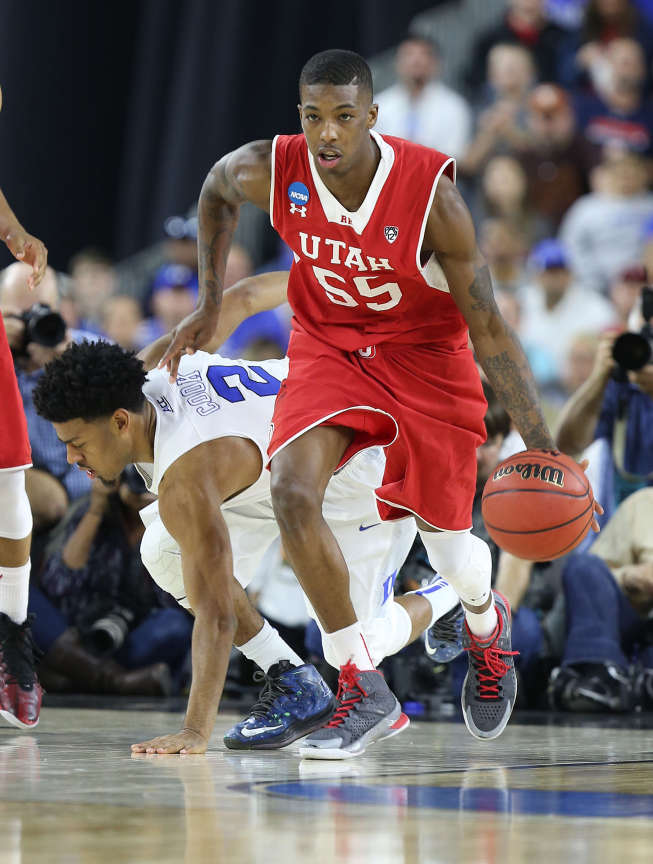 Many recreational centers require referees to youth games, and that is a good place to start. A good idea is also to become a member of the National Association of Sport Officials, they do trainings and can certainly help you become a better referee. Starting from the bottom, you can work your way until becoming a full-time referee for the NBA, or simply have some fun officiating local high school games.
Many recreational centers require referees to youth games, and that is a good place to start. A good idea is also to become a member of the National Association of Sport Officials, they do trainings and can certainly help you become a better referee. Starting from the bottom, you can work your way until becoming a full-time referee for the NBA, or simply have some fun officiating local high school games.
Referee Equipment List
There are quite a few pieces of equipment that basketball referees must have in order to do their job. Take a look at them here:
- Black athletic shoes
- Black athletic socks
- Black beltless slacks
- Striped black and white shirt
- Good, loud whistle
PRO TIP: When purchasing your equipment, remember that you are going to be running and sweating while working, so buy comfortable and light clothes.
PreviousNext
Pages Related to How To Referee Basketball
- How To Play Basketball Free Throw Golf
- How To Play Basketball Pickup Games
- How To Play Basketball Outside
- American Basketball Association
- How To Shoot With Power
- Basketball Leagues
PreviousNext
Basketball - Say Yes To Officiating
Recruit, Retain & Celebrate Sports Officials
How To Become a Basketball Official
Basketball officiating is great if you are interested in being constantly active and closely involved with the game action.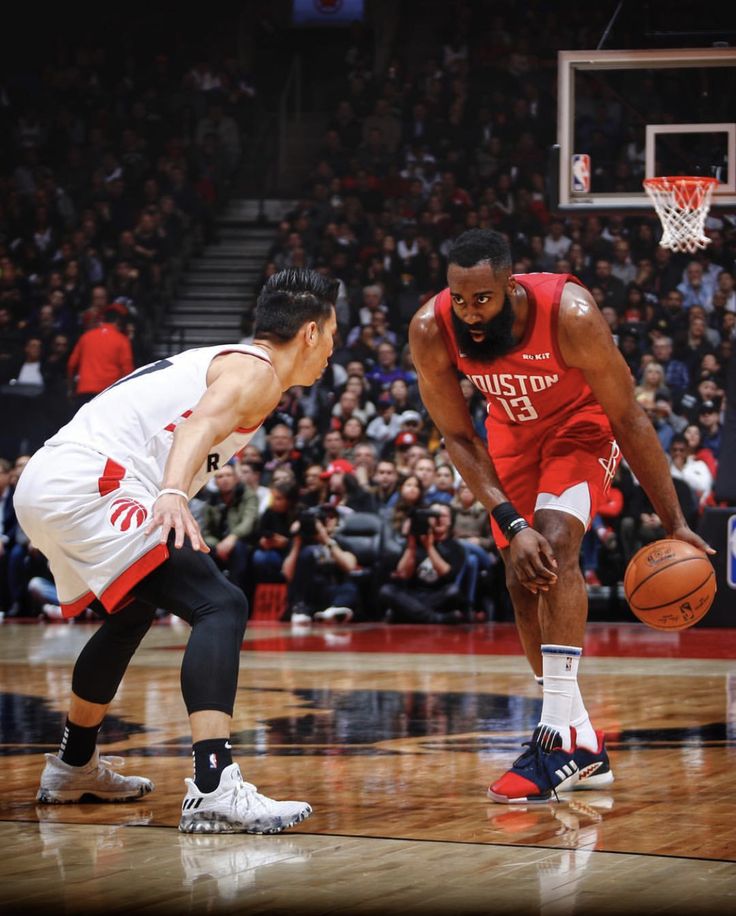 Basketball is also a sport you can officiate nearly year-round via school, club, AAU and amateur contests and therefore has a higher earning potential than many other sports.
Basketball is also a sport you can officiate nearly year-round via school, club, AAU and amateur contests and therefore has a higher earning potential than many other sports.
Why Real Officials Love What They Do
“
You Meet All Types
You meet just about every type of person there is and you have to learn to deal with all of them in a manner that shows that you deserve to be called an “official.” You meet cheaters, schemers, geniuses and idiots. You meet talented, mediocre and middle-of-the-road people. No matter who you meet, you have to deal with them as people who deserve the best from you. No matter what age, talent, salary, race or sex, you must give your all. You are expected to be perfect and improve after that.
Rick EberhardtBuffalo, N.Y., a 36-year basketball official
“
It is the Best Seat in the House
I love officiating because of the challenge. It is by far the most difficult thing I’ve ever done.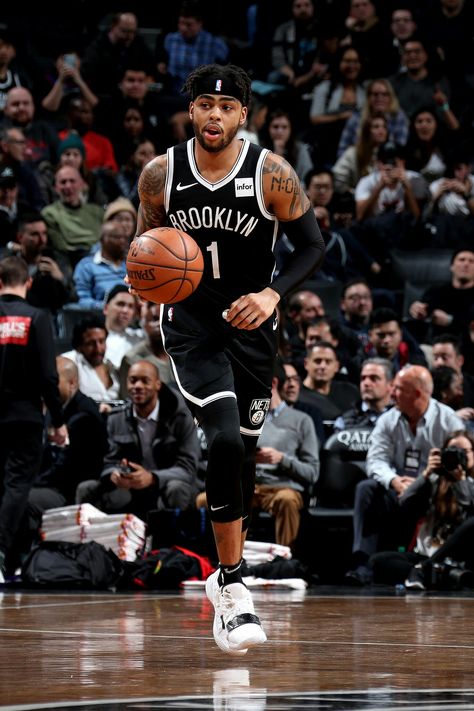 Unfortunately, we miss plays every night, but the challenge of trying to be perfect and get every play right is why I love it so much. There is no better feeling then walking back into the locker room with your partners and knowing that we worked together as a team and that we gave everything we had for those 48 minutes.
Unfortunately, we miss plays every night, but the challenge of trying to be perfect and get every play right is why I love it so much. There is no better feeling then walking back into the locker room with your partners and knowing that we worked together as a team and that we gave everything we had for those 48 minutes.
Ed MalloyNBA referee from Aston, Pa.
“
It Has Toughened Me Up
Because of officiating I see clearly that life moments often are not about winning or even losing. It’s about being the best you can be in that moment and accepting the outcome. Sometimes I may not like the outcome, but I accept it knowing I did my best and move forward. I’ve learned how to deal with difficult crowds; I have been called things my mother did not name me. I have watched winners lose and losers win. Each year I learn something that makes me a better official and a better person. Each year I meet people that inspire me and people who serve my life no purpose, but I learn from all of it.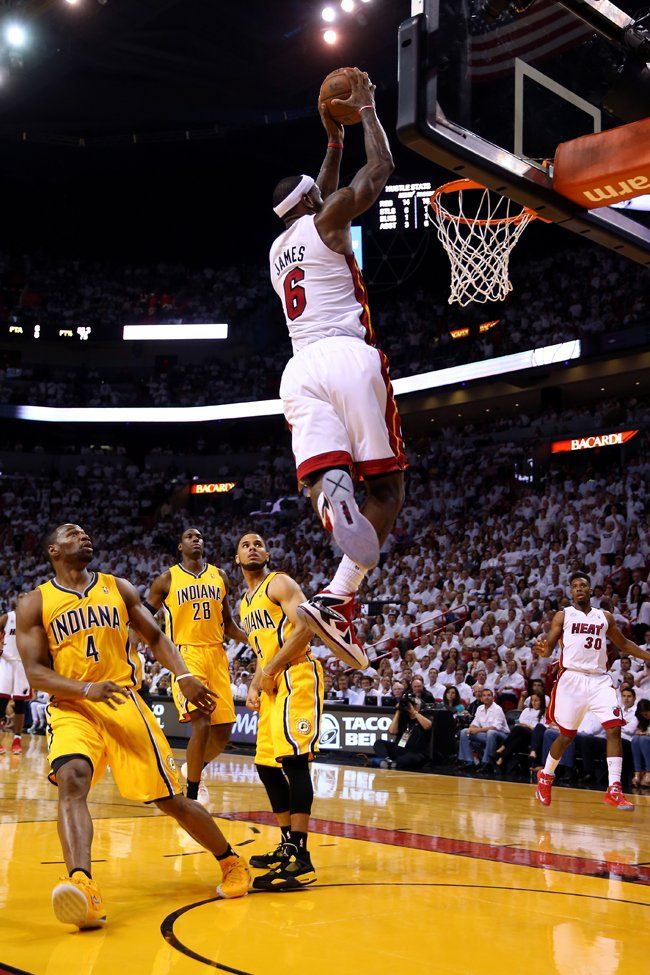
Bertha MooreHigh school basketball official from Baltimore, Md.
Things To Consider
Physical Demands
Basketball officials are moving constantly. There are no opportunities for rest while play is ongoing because basketball officials need to adjust their positions constantly to see the action as player positions shift. You will run between 1 and 4 miles during a competitive basketball game. Most basketball games take place indoors, but because of the activity level, hydration is something basketball officials take seriously. As the players you’re officiating get older and the competitive levels increase, the physical demands also increase.
Mental Demands
Basketball officials work with one or sometimes two or three partners. You will shift between the lead position and the trail or center position many times per game, and thus, your responsibilities will change constantly. Basketball officials are also closer to the players, coaches and the fans than in other sports and must be able to focus and ignore distractions. You will also need to be able to handle hearing verbal criticism from the stands and sometimes communicate with coaches. Teamwork and support for and from your partners is crucial to success in basketball officiating.
You will also need to be able to handle hearing verbal criticism from the stands and sometimes communicate with coaches. Teamwork and support for and from your partners is crucial to success in basketball officiating.
Training
Basketball requires officials to move to different positions around the court, and be responsible for watching different parts of the action depending on where they are. To maximize your success, you’ll have to learn all these positions well. You can train yourself with rulebooks and manuals from the Referee Training Center, but you should also join a local officials association where you can expect lectures, demonstrations and exercises that will prepare you for what you’ll face.
Different organizations have different requirements, but most require at least attendance at a meeting to go over any current rule changes. Additional requirements may be a written test with a minimum passing score, payment of fees for the upcoming season and association meeting attendance.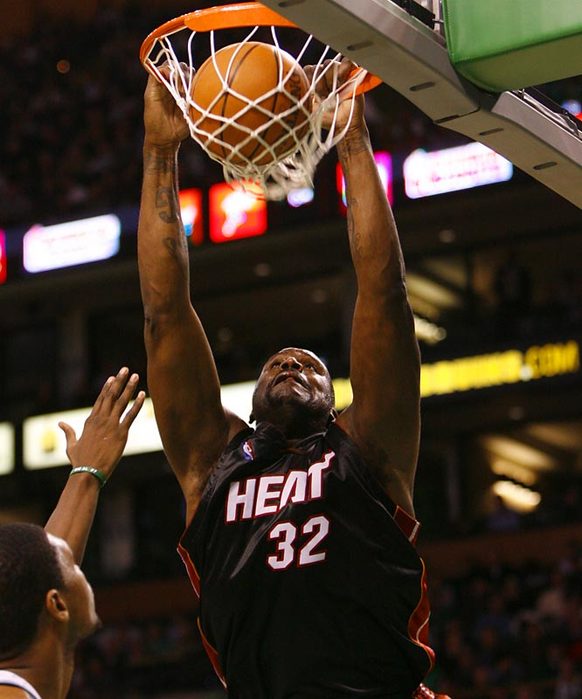
Equipment
- Polished, black, athletic shoes.
- Black socks.
- Black beltless slacks.
- A striped V-neck shirt no collar.
- A whistle and a lanyard.
Estimated cost: $200. Once you join a local officiating association, there may be veteran officials who are willing to give or sell you “hand–me–downs” to help you get geared up at a reduced cost.
Game Fees
Game fees vary widely based on the players’ age group, competitive level and the state you officiate in. The fees range from $20-$35 for youth games and $45-$150 for competitive high school games. To maximize your income, you can work a combination of levels several days a week, including weekend tournaments where you can work games all day. You can also work adult amateur, club and AAU basketball year-round to make reliable income. A basketball official working youth, high school and adult amateur games, with a full schedule, can make several hundred dollars per week outside their normal jobs. College officials make more and game fees increase with the level of competition. Many high level college officials and professional officials do not have other jobs, and live on their officiating income.
College officials make more and game fees increase with the level of competition. Many high level college officials and professional officials do not have other jobs, and live on their officiating income.
Certification
Here’s the path for starting and continuing your officiating career:
Youth Level
Many officials start at the youth level. Contact your local recreation department leaders. Your local association should also help you make contacts to get games. Parks & Rec departments offer youth and adult games in many cities and you can potentially work multiple games per day on the weekends for schools and independent organizations, enhancing your earning potential.
High School
After working youth games, you may feel you have the skills and confidence to work higher levels of competition. You may also start at this level if you have a good grasp of the rules and/or experience as a player. For jr. high games, ask your association leader or contact your school district.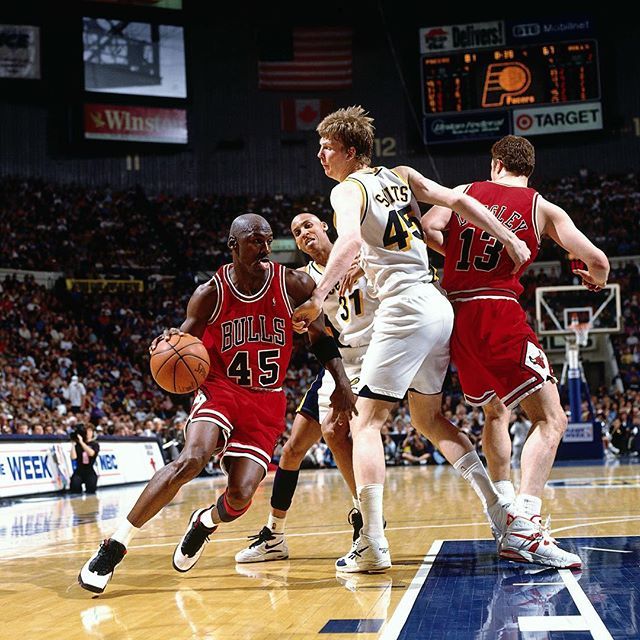 For high school games, you’ll need to work with an assigner through your local association. Any work with sanctioned school games requires you to be registered through your state, to prove you’re competent.
For high school games, you’ll need to work with an assigner through your local association. Any work with sanctioned school games requires you to be registered through your state, to prove you’re competent.
The National Federation of State High School Associations (NFHS) is the nation’s governing body for high school athletics. Through them you can get all the information you need from your state to register and start the process to work High School sports.
Begin your high school basketball officiating journey at highschoolofficials.com
In most cases, your state association can put you in contact with a local officials’ association. Local associations assign games, many times offer mentoring programs and assist in training.
High school athletic directors, association assigners and other officials can also get you games.
Plan to attend local camps and clinics. They are focused on helping officials learn and improve.
College
College basketball officiating is highly competitive. Officials with one year of youth experience would most likely not be a candidate even though there isn’t a designated number of years of experience to reach the college ranks. Obtaining a conference schedule and advancement within a conference is based on the league or conference. When first trying to enter a college conference, talk with officials who are currently in the conference. They can give you valuable information such as the conference commissioner and officiating camps to attend. College athletic directors or sports information directors can also be helpful.
Officials with one year of youth experience would most likely not be a candidate even though there isn’t a designated number of years of experience to reach the college ranks. Obtaining a conference schedule and advancement within a conference is based on the league or conference. When first trying to enter a college conference, talk with officials who are currently in the conference. They can give you valuable information such as the conference commissioner and officiating camps to attend. College athletic directors or sports information directors can also be helpful.
You may start your career in the NAIA, work a NCAA Division III conference, advance to a Division II schedule, then on to a smaller Division I conference and culminate with a major Division I schedule. Attending officiating camps is an important tool to improve your officiating. Not only can you learn from experienced veterans, you can be seen by those who assign games at that level, most often conference commissioners or officiating supervisors.
The collegiate national governing bodies:
National Collegiate Athletic Association (NCAA)
PO Box 6222
Indianapolis, IN 46206-6222
317-917-6222
National Association of Intercollegiate Athletics (NAIA)
120 W. 12th Street
Suite 700
Kansas City, MO 64105
816-595-8000
National Junior College Athletic Association (NJCAA)
PO Box 7305
Colorado Springs, CO 80933- 7305
719-590-9788
Professional
The NBA and WNBA are two of the world’s premier sports and entertainment enterprises; a diverse group of high performing individuals delivering joy and excitement to hundreds of millions of basketball fans all over the world. It should be no surprise that much of our success depends on the Referees who ensure the integrity of the game and a forum where player’s skills, team dynamics, passion and dedication determine game outcomes.
The NBA and WNBA recruit referees from around the globe to become part of our team, but also to provide those who want to pursue this exciting career with insight into how they can develop their skills to achieve professional-level officiating excellence.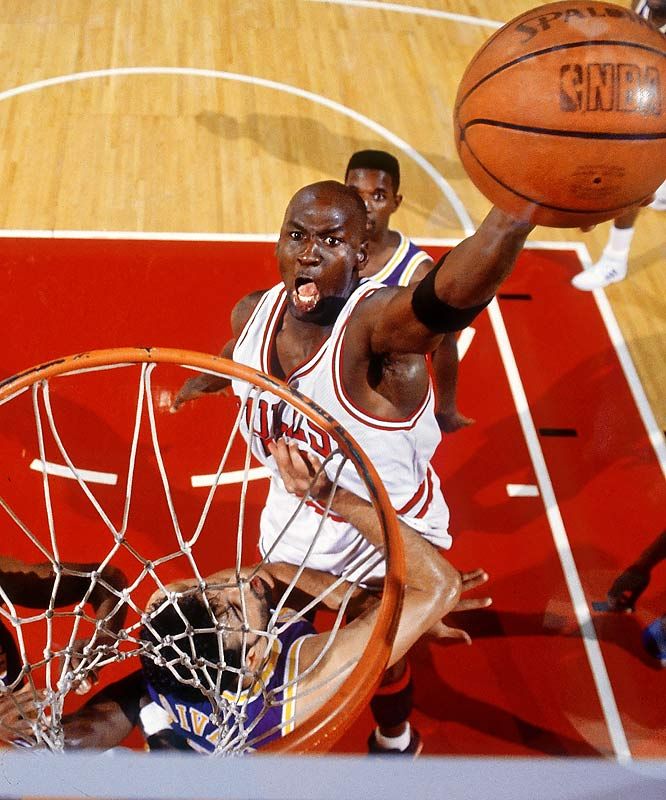
The NBA and WNBA review candidates based on expertise of officiating in live events. Prospective officials should contact any of these organizations to begin their professional journey. Candidates are evaluated by the NBA Scouting Group.
- NCAA & Conference Camps
- High School
- Intramurals/Recreation
- College (all Levels)
- Pro Am
- International
- National Try Out
Please refer to nbaofficials.com for further information.
National Association of Sports Officials
You may also consider joining NASO, the only nation-wide officials support organization. As a member-driven community; NASO exists to unite, celebrate, develop and protect all officials so that they can reach their goals and take pride in their contributions to the benefits that sports provide society.
Learn more about NASO at NASO.org.
Looking for ways to Recruit & Retain Sports Officials?
Start Here
Looking to Become
A Sports Official?
Start Here
Refereeing in basketball
Basketball
-
Historical development
-
Rules
-
Material support
-
Judging
-
Technique
-
Tactics
-
Education and training
-
Choosing a basketball
Basketball: judges on the court and the panel of judges.
Basketball matches are officiated by referees. The brigade consists of experienced judges with a clear knowledge of the rules of refereeing and having many years of experience. Judges are guided not only by the postulates of the prescribed rules. The referee is obliged to use common sense in assessing the situation, taking into account the mood and attitude towards the game by the teams.
It's not right to judge professionals and beginners the same way. Newcomers to the game often make many technical mistakes. Only fixing all such errors will greatly slow down the whole game. The fundamental principles in adjudicating rule violations are the basis for building a cohesive game.
The referee must not pause the game unless clearly necessary. Any aggression and rudeness on the court should be stopped immediately, but a player should not be punished with a foul for unintentional contact, especially if it does not give any advantage in a particular game situation.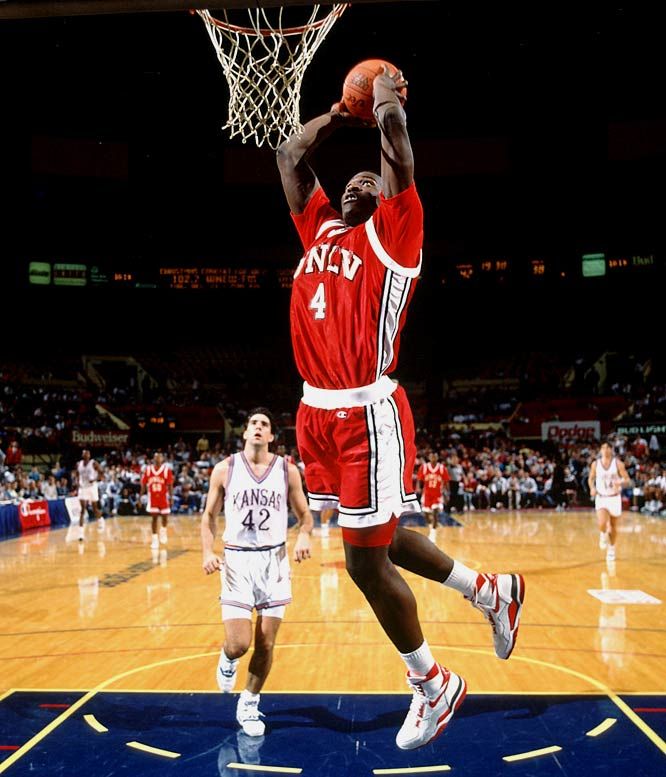 The integrity and direct course of the game depends on the actions and skills of the referee.
The integrity and direct course of the game depends on the actions and skills of the referee.
The team of referees serving a professional basketball match must include:
Chief referee and site referees.
Two or three referees serve the game to fix errors on the court. They have quite broad powers. The chief referee makes significant decisions on the compliance of equipment, equipment, players' uniforms with the requirements of the rules. In case of serious violations, the Chief Referee may count the defeat. Referees start their duties 20 minutes before the start of the match. During the match, the referees clearly adhere to the rules. The decisions of colleagues are not questioned. The service of the game by the judges on the site is stopped by the sound of the siren.
Secretary and his assistant.
The Secretary is responsible for the correct keeping of the score sheet. Through it, coaches submit applications for participation in the game, containing the data of the players. The maximum number of players per team cannot exceed 12 (5 main and 7 substitutes). Fixing the game score, interacting with the teams if a substitution or timeout is necessary, these are the main duties of the Secretary.
The maximum number of players per team cannot exceed 12 (5 main and 7 substitutes). Fixing the game score, interacting with the teams if a substitution or timeout is necessary, these are the main duties of the Secretary.
The scorer can only address the referee in a dead ball situation. Control over the number of fouls is also assigned to the Secretary. He brings this information to the judges and teams.
Timekeeper.
A basketball timekeeper must know the referees' gestures well and know the rules of the game. He is obliged to turn on and stop time on the scoreboard in a timely manner, guided by the gestures of the referees (whistle), as well as independently making a decision when putting the ball into play, declared a time-out, breaks, controversial or free throws. In the last quarter, 2 minutes before the end of playing time, the timekeeper stops the countdown after each effective throw.
Shot clock operator.
The main function of the shot clock operator is to enforce the 24 second time rules. It turns on the timer every time the team gets possession of the ball and turns it off when the ball goes out of bounds. The timer is reset after a successfully completed attack or loss of ball control by the team. The timekeeper must reset the possession time to 14 seconds in a situation where a foul is committed on the team in possession of the ball or the ball is taken by the attacking team after an unsuccessful attempt to hit the ring. In this case, the ball must touch the ring itself, and the stopwatch must have any number less than fourteen seconds.
It turns on the timer every time the team gets possession of the ball and turns it off when the ball goes out of bounds. The timer is reset after a successfully completed attack or loss of ball control by the team. The timekeeper must reset the possession time to 14 seconds in a situation where a foul is committed on the team in possession of the ball or the ball is taken by the attacking team after an unsuccessful attempt to hit the ring. In this case, the ball must touch the ring itself, and the stopwatch must have any number less than fourteen seconds.
The basic gestures of a basketball referee can be divided into groups in order of importance to the player:
Official basketball referee gestures related to infractions
IMPORTANT! These violations result only in the loss of the ball, without any effect on personal and team fouls.
-
Fist rotation - jog
-
Movement of the palms of both hands up and down - double guidance
-
Half rotation of the palm - carrying the ball
-
Finger pointing at the foot - Intentional foot play
-
Front hand swing with two fingers - ball returned to the backcourt
-
Swinging from the bottom up with an outstretched hand with 3 fingers - 3 seconds
-
Show 5 fingers - 3 seconds
-
Show 8 fingers - 8 seconds
-
Finger touching shoulder - 24 seconds
Official basketball referee gestures related to types of fouls
Fouls are punished for an unauthorized action by a player in relation to another individually, as opposed to violations.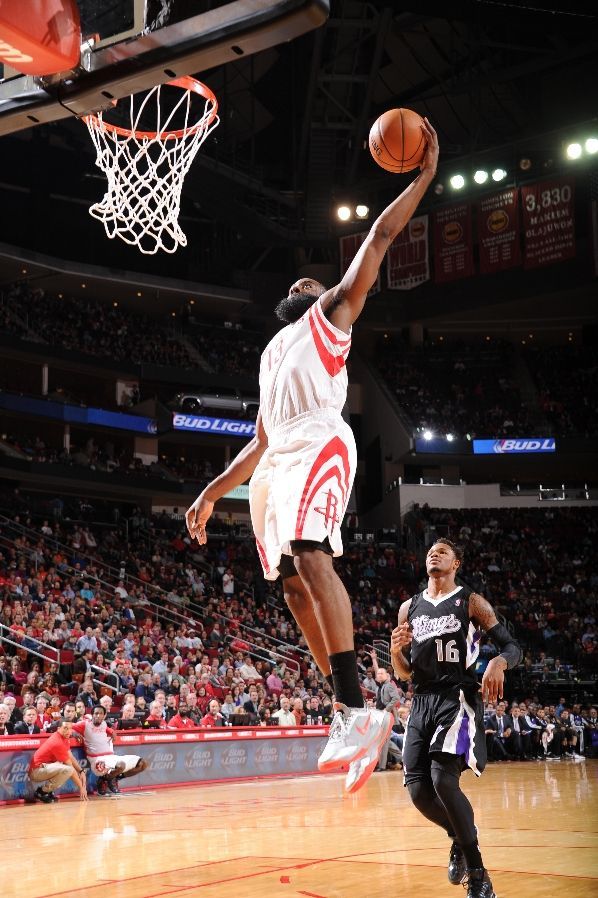
-
Wrist interception below - delay
-
Palm grip and forward movement - hold with hands
-
Both hands on hips - blocking (defensively) or improper screening (offensive)
-
Imitation of pushing - pushing or impinging a player without the ball
-
Wrist hit - misuse of hands
-
Punching to the open hand - Collision of the player with the ball
-
Striking with the hand on the other forearm - incorrect contact in the arm
-
Movement of the elbow to the side - excessive swinging of the elbow
-
The fingers of one hand are clenched into a fist, followed by an indication of the number of free throws - foul in the act of throwing
-
The fingers of one hand are clenched into a fist, followed by an indication of the floor - foul not in the process of throwing
-
Simulated head contact - blow to the head
-
Pointing the fist in the direction of the offending team's basket - foul to the team in control of the ball
Official Basketball Referee Signals, Substitutions and Time Out Signals
-
Crossed forearms in front of the chest - replacement for
-
Wave towards yourself with the palm of the outstretched hand - invitation to the playground
-
Palm and index finger form the letter T - timeout requested
-
Arms to the sides with clenched fists - media timeout
Official Basketball referee gestures, scoring gestures
-
Raised hand raise one finger, lower the hand down - 1 point
-
Raised hand raise two fingers, lower the hand down - 2 points
-
Raised hand with three fingers (attempted throw) or raised both hands with three fingers (successful throw) - 3 points
Official basketball referee gestures, informative gestures
-
Single bringing and spreading of the hands in front of the chest - cancellation of a hit or play action
-
Countdown with open hand movement - Visible Countdown
-
Thumb Up - Interaction
-
Wrist rotation over head with extended index finger - reset shot clock
-
Hand with index finger extended parallel to the touchline - Direction of throw-in and/or throw-in
-
Thumbs up of both hands followed by directions - V-ball or throw situation
Official basketball referee gestures, player numbering gestures
-
Right hand display of numbers from 1 to 5 - from #1 to #5
-
Showing the number 5 with the right hand, and with the left hand from 1 to 5 - from No. 6 to No. 10
6 to No. 10
-
The right hand is clenched into a fist, the left hand shows the numbers from 1 to 5 - from #11 to #15
-
First, showing the number for tens with the outside of the brush, then with the palm of the hand the number 0 for units - 40
-
First, showing the numbers for tens with the outside of the brush, then with the palm of the hand, the numbers for units - 62
Official Basketball Referee Signals, Special Fouls
-
Movement with crossed arms with fists overhead - mutual foul
-
Palms form the letter T - technical foul
-
Interception of the wrist with a clenched fist at the top - unsportsmanlike foul
-
Both hands up with clenched fists - disqualifying foul
Official basketball referee gestures related to the game clock
-
Open palm up - stop watch
-
One fist above head - stop clock on foul
-
Hand down chopping motion - clock activation
Basketball
-
Historical development
-
Rules
-
Material support
-
Judging
-
Technique
-
Tactics
-
Education and training
-
Choosing a basketball
Basketball rules: gestures of judges in basketball
Hello, dear visitors of the site " Basketball Lessons ". Today we will talk about one of the integral parts of the refereeing process in a basketball game - the gestures of the referees. The gestures of basketball referees serve to explain to both the spectators and table officials what point of the basketball rules was violated, by whom it was violated and what sanctions the player who violated the rules will incur.
This article was written using FIBA Official Rules 2010 , which are currently the basis for all professional basketball tournaments in territory under the control of the International Federation of Basketball Associations. To quote these rules: “The signs given in these Rules are the only official signs. They must be used by all referees in all games. It is important that table officials are also familiar with these gestures.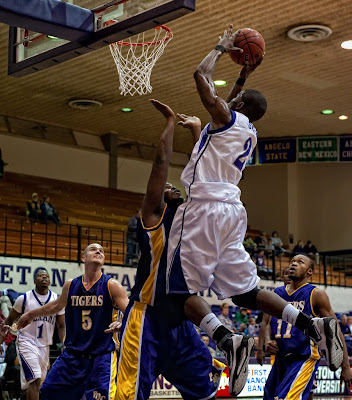 ”
”
Let's start the story about the gestures of basketball referees with gestures that indicate shots on the ring , successful shot attempts, as well as the indication of the number of points scored.
Rules of Basketball: referee gestures - throwing the ring
The next series of referee gestures affects everything that is somehow connected with playing time. Basketball Rules: Basketball referees' gestures about playing time
Administrative gestures of basketball referees are related to substituting one player for another, inviting a player to the court, announcing a time-out, as well as visual demonstration of the countdown (five seconds and eight seconds) . In addition, there is a gesture that is used to communicate between referees and table officials. Basketball rules: administrative gestures of referees
The next group of gestures, which includes eleven types of gestures, is designed to demonstrate to the spectators and table officials which basketball rules were violated in this particular episode. Referee signal will tell us if the player had a run or used an incorrect dribble (double dribble, carry), if the player was too long in the three-second zone or did not have time to put the ball into play, if the kick was intentional or if the player fouled a rule zones. Basketball rules: gestures of basketball referees violation of the rules
Referee signal will tell us if the player had a run or used an incorrect dribble (double dribble, carry), if the player was too long in the three-second zone or did not have time to put the ball into play, if the kick was intentional or if the player fouled a rule zones. Basketball rules: gestures of basketball referees violation of the rules
Okay, the player violated basketball rules (committed a foul) and the referee noticed it. Now he must fully inform the referee's table about this. The whole procedure consists of three steps. The first step is to notify the table officials of the number of the offending player. Basketball Rules: Informing Referees Gesture
The second step is to demonstrate what type of foul has occurred: misuse of the hands, a collision with a player in possession of the ball, or a player without the ball. Also, in certain situations, the referee may call a double foul, technical foul, unsportsmanlike foul or even a disqualifying foul.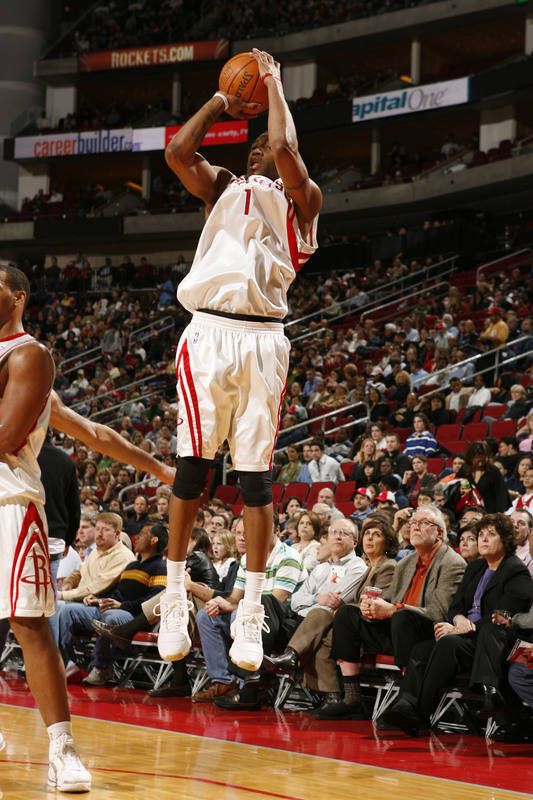
Rules of Basketball: Foul Type Gesture
Finally, the referee's third step is to announce the number of free throws awarded (one, two or three shots). If the violation of the rules does not involve free throws, then the referee must indicate the direction for the continuation of the game. Rules of Basketball: Punishment for Violations of the Rules Rules of Basketball: Punishment for Violations of the Rules
So, the referee has already shown the type and type of violation of the rules and determined the punishment for him. The last group of gestures of basketball referees refers directly to the performance of free throws (free throws). Moreover, the type of gesture differs depending on whether the referee is inside the restricted area or outside it. Rules of Basketball: Free Throws Rules of Basketball: Free Throws
This is the end of the article devoted to such important elements of basketball, as referee gestures. Thanks to it, without the help of a commentator (especially in English-language broadcasts), we will be able to figure out who and for what violation of the rules of the game of basketball was assigned a personal note; we will see how the referee, who is on the site, addresses his colleagues, who are at the referee's table, with gestures.